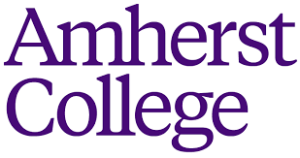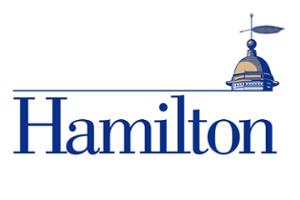10 Colleges That Allow Students to Create Their Custom Degrees
Find your perfect college degree
It’s not surprising that many college students don’t know what to major in college. In fact, according to the University of Florida, almost half of US college students are unsure of their career paths when enrolling in college. If you’re one of these students, an Open Curriculum might be the best fit for you.

What is an Open Curriculum?
An open curriculum is a framework that gives college students a great deal of autonomy in creating their own educational route. Undergraduate core course requirements for open curriculum colleges are few to nonexistent. Unlike traditional colleges, students in an open curriculum can select the subjects and courses they want to study based on their interests and professional objectives.
For students whose interests don’t often overlap, some universities will even allow them to construct their own majors entirely.
For example, you’re intrigued by the topics found in computer science and literature. In an open curriculum college, you can study both degrees (without choosing a major) and have a unique, individualized environment.
This approach promotes interdisciplinary learning, allowing students to explore connections across various academic disciplines and enhancing their understanding of the interconnectedness of these fields.
Are Customized Degrees Better Than Traditional Degrees?
While open curriculum colleges are great for customized learning, they’re not for everyone. Remember, there’s no one-size-fits-all in higher education. Some might argue that these degrees will not benefit students in the future, while others will say they do.
Whether customized degrees and open curriculum colleges are better than traditional degrees depends on your interests and career goals.
To determine your fit, you need to understand the pros and cons of open curricula.
Let’s first talk about the pros…
The first and most obvious benefit of open curriculum colleges is the trust and independence they provide their students with. Students enrolled in customized degrees can freely explore other options extending beyond their interests. An open curriculum allows students to study history while exploring the intricacies of the technologically advanced world.
Giving college students the flexibility to select what and how they study helps them become independent learners, fostering a sense of accountability while advancing academic maturity and personal development.
Additionally, colleges with open curricula are known to cultivate a lively and welcoming community. Unlike traditional degrees, where you’re more likely to be confined to a single network, open-curriculum colleges allow you to interact with individuals in other fields. This approach improves your social skills, preparing you for the diverse and connected world you will face after graduation.
However, an open curriculum will also have its disadvantages…
As they say, “with great freedom comes great responsibility,” and for students who lack organization skills, this can be too much to bear. Open curriculum colleges may often require their students to carry on more workload, which may lead to burnout. But then again, this will depend on the course load you accept and pursue, and besides, college is supposed to be mentally and physically taxing.
Another downside of open curriculum colleges is that they often become the scapegoat of some students. For instance, students who hate arithmetic might pick Brown University so they won’t have to take math classes in college. This way of thinking undermines real college learning, which can lead to reduced competitiveness in the workplace.
The most known disadvantage of an open curriculum is its possible lack of expertise/specialization. An open curriculum may not offer the same level of rigor and depth as traditional college degrees.
Graduates of an open curriculum may encounter challenges in immediate job placement, particularly in STEM fields, raising questions about the degree’s direct impact on career readiness.
10 Colleges That Allow Students to Create Their Custom Degrees
Brown University

Acceptance Rate: 5.5%
Graduation Rate: 95.6%
Average Undergraduate Tuition: $65,656
Brown University, one of the most prestigious private Ivy League institutions in the United States, is regarded as the top school of Open Curriculum. Brown University aims to engage, empower, and transform students through a flexible academic structure, promoting individual, experimental, and integrative learning through a diverse curriculum.
Brown University offers over 80 concentration paths, focusing on arts or science. This broad range of courses allows students to design their own program and explore classes unrelated to their primary study area. Some of their more popular courses include:
- Computer Science
- Economics
- Biology
- Science and Technology
- Music
- Mathematics
- Education Studies
- Engineering
- Social Analysis and Research
Brown has a very competitive admissions process. The university considers factors beyond academic achievements. Its test-optional policy, personal essays, and need-blind admission policy ensure diversity and inclusion.
Applicants must demonstrate a passion for learning, community service, and unique perspectives to stand out in the highly selective pool.
Amherst College

Acceptance Rate: 8.7%
Graduation Rate: 95.5%
Average Undergraduate Tuition: $66,650
Amherst College is one of the most comprehensive and competitive private liberal arts colleges, with a low acceptance rate. The college’s Open Curriculum policy allows prospective students to tailor their programs based on their interests and career goals. Qualified students can choose from over 400 courses available each term, along with other courses offered by the Five College Consortium.
A few of the most popular courses include:
- Chemistry
- Econometrics and Quantitative Economics
- Mathematics
- Political Science and Government
- Research and Experimental Psychology
- Computer Science
- Biology
Each student will receive one-on-one guidance with faculty or academic advisors in tailoring their academic programs. These professionals will ensure that students won’t have any regrets in their chosen courses. They’ll also provide tips on how to use their courses in the job market.
Amherst College has a very low acceptance rate. The average standardized test scores of admitted students at Amherst are 33–35 on the ACT and 1450–1550 on the SAT.
Grinnell College

Acceptance Rate: 10.5%
Graduation Rate: 88.4%
Average Undergraduate Tuition: $67,560
Grinnell College is a renowned private liberal arts college known for its commitment to academic excellence, social responsibility, and a unique system of self-governance. Grinnell is applauded for offering its undergraduate students various research and experiential learning opportunities.
Unlike traditional universities with a rigid set of required courses, Grinnell’s Individually Advised Curriculum encourages exploration across disciplines. While there are no mandatory classes, students engage in a first-year tutorial that introduces critical thinking and intellectual inquiry. This tutorial experience helps students transition to the college’s academic environment and cultivates foundational skills that will be valuable throughout their college careers.
Among the most enrolled courses in Grinnell includes:
- English
- French and Arabic
- Religious Studies
- Anthropology
- History
- Chemistry
- Mathematics and Statistics
- Environmental Studies
Grinnell College’s competitive admission requirements require applicants to be at the top of their class, with straight As on their high school work. Applicants enrolled in challenging subjects like AP or IB have higher chances of admission.
Hamilton College

Acceptance Rate: 11.8%
Graduation Rate: 92.7%
Average Undergraduate Tuition: $65,090
Hamilton College, a private liberal arts institution, offers an impressive Open Curriculum policy. This allows students to choose college courses that align with their interests while studying the liberal arts. Students can freely choose from over 44 specialized courses. Some of the most enrolled courses at Hamilton include:
- Computer Science
- Data Science
- Social Sciences
- Biological and Biomedical Sciences
- Visual and Performing Arts
- Foreign Languages, Literatures, and Linguistics
- Physical Sciences
- Psychology
- Mathematics and Statistics
- English Language and Literature/Letters
- Public Administration
Regardless of their majors, students must study diversity to help them think critically about the experiences of social groups worldwide. The approach to this subject will vary from department to department and ensure that topics and coursework remain consistent with students’ fields.
You must have an ACT score of 34 and a SAT score of 1520 to be admitted to Hamilton College, which is in the 75th percentile of test results. Moreover, you had to have a GPA of at least 4.
Colorado College

Acceptance Rate: 14.3%
Graduation Rate: 83.4%
Average Undergraduate Tuition: $67,458
Colorado College is a private liberal arts school known for its customizable course schedules. Thanks to its Block Plan structure, CC students can enroll in one class at a time. Moreover, CC does not require students to pursue traditional academic paths. Instead, Colorado College offers rigorous, broad requirements, providing independence and guidance throughout four years.
Colorado College’s Block Plan offers a dynamic campus-wide rhythm, starting with the First-Year Program (FYP) and guiding students through in-depth critical thinking, analytic discussion, and intensive writing. Students will receive guidance from esteemed faculty members in customizing their course selection and pacing.
Wesleyan University

Acceptance Rate: 16.5%
Graduation Rate: 91.6%
Average Undergraduate Tuition: $66,716
The private liberal arts university Wesleyan University offers another outstanding Open Curriculum policy for both US and international students. Wesleyan’s mission encourages independent thinking, critical thinking, and connections across courses. Students can explore new fields and make connections across disciplines.
Moreover, the open curriculum encourages students to create their own plan for general education, focusing on nine general education course credits by graduation. A major is essential for preparing for a specific profession or postbaccalaureate education. Among the most popular majors at Wesleyan includes:
- Psychology
- African American Studies
- Computer Science
- Earth and Environmental Sciences
- Mathematics
- Molecular Biology and Biochemistry
The average GPA of admitted students at Wesleyan is 3.9, with average scores of 1391 and 32 on their SAT and ACT scores, respectively.
Wake Forest University

Acceptance Rate: 25.2%
Graduation Rate: 88.2%
Average Undergraduate Tuition: $64,918
Wake Forest University is a private research university renowned for its flexible Open Curriculum Policy. Students pursuing the open curriculum option will closely work with an academic advisor to tailor their courses.
Students’ proposed course combinations will undergo a rigorous review procedure before implementation. This guarantees that the courses selected uphold the university’s commitment to academic rigor and excellence while matching the student’s academic and professional goals.
Some of the program’s available courses include:
- History, Philosophy, and Religion
- Social and Behavioral Sciences
- Natural Sciences and Mathematics
Wake’s admission may not be as competitive as other colleges, but its limited seating makes it a highly sought-after institution.
Smith College

Acceptance Rate: 23%
Graduation Rate: 88.9%
Average Undergraduate Tuition: $61,260
Smith College is one of the largest and most comprehensive private liberal arts colleges for women. While there are no required core courses for Smith’s Open Curriculum, undergraduate students must complete one writing-intensive course. While Smith offers several specialization courses, its STEM majors are the most popular.
While not required, students are advised to pursue a course in each of the following fields:
- Literature
- Historical Studies
- Social Science
- Natural Science
- Mathematics and Analytic Philosophy
- The Arts
- Foreign Language
The average GPA of students accepted into Smith College is 3.84, meaning you must be in your class’s top 5 or 10. Ideally, you need a few AP or IB classes to demonstrate your college-level readiness.
University of Rochester

Acceptance Rate: 40.5%
Graduation Rate: 87.5%
Average Undergraduate Tuition: $63,150
The University of Rochester, a private research university, is all about allowing students to maximize their interests fully. Undergraduate students have no required core curriculum or general requirements. Instead, Rochester requires students to complete one writing course, all major courses, and one cluster in each division.
Students can explore and connect courses in the School of Arts & Sciences, School of Engineering & Applied Sciences, School of Music, School of Medicine and Dentistry, School of Nursing, Business School, and School of Education.
Hampshire College

Acceptance Rate: 75.1%
Graduation Rate: 62.8%
Average Undergraduate Tuition: $27,446
Hampshire College, a private liberal arts institution, has among the highest acceptance rates of colleges with an open curriculum. Hampshire College’s culture of curiosity and exploration attracts diverse students, fostering inclusivity and open-mindedness. Graduates excel in self-directed learning, critical thinking, and adapting to the ever-changing world.
Instead of the traditional approach to education, Hampshire’s Learning Collaboratives offer students academic resources and opportunities to tackle real-world issues. Students will participate in a dynamic and updated curriculum without being restricted to a specific major.
Due to the school’s high acceptance rate, admission is nearly guaranteed for those with outstanding academic credentials.
The Best Combined Courses
One of the struggles in choosing open curriculum colleges is choosing which courses play harmoniously together. One of the most effective strategies is to choose a “central theme,” or subject you’re mostly intrigued with, and combine it with on-demand courses.
But just an idea, here are some of the best-combined courses today.
Philosophy and Computer Science
In the 21st century, the intersection of Philosophy and Computer Science has become increasingly relevant due to the development of self-driving cars, artificial intelligence, and online privacy concerns. Combining Philosophy and Computer Science courses can help navigate the challenges posed by technology and enhance career prospects.
Mathematics and Music
Music students face a difficult choice when choosing their university education. They may choose to study music as a hobby or as a joint honors subject, such as Mathematics. While music graduates have better job prospects, Maths offers a well-paid career and a good graduate employment rate.
Economics and Psychology
Economics and Psychology, when combined, can give you access to a wide range of career paths and promising job prospects. Economics and Psychology can address human behavior and interactions scientifically, challenging the assumption that humans act rationally.
Frequently Asked Questions
What Is an Open Curriculum in College?
An open curriculum in college offers students flexibility in choosing courses, allowing them to design their educational experience, unlike traditional structured curricula.
Do Open Curriculum colleges allow you to have a major?
Yes, many schools that offer an open curriculum still let students choose their majors. Most of the time, students can choose from a wide range of pre-established majors or create their own.
How do I know what courses to take in an open curriculum?
Open curriculum colleges invest a lot in their academic advising services. You will be advised to take advantage of this opportunity and work with an academic advisor in creating a customized degree program. These advisors will evaluate you if you’re fit for this kind of learning and will help you achieve your goals.
Do open curriculum colleges have required courses?
In some cases, yes. Open curriculum colleges may have few mandatory requirements and follow specific guidelines and distributional requirements. This ensures that each student, regardless of their planned courses, will have the same foundational skill set and a well-rounded education that prepares them for future studies.
Can I still graduate on time with an open curriculum?
Yes, students can still graduate on time, and an open curriculum may provide opportunities for more efficient degree completion by allowing students to focus on their chosen areas of study.
How common are open curricula in colleges and universities?
Open curricula are less common than traditional curricula, but some well-known institutions, such as Brown University and Amherst College, have adopted this approach.
Additional Resources:




